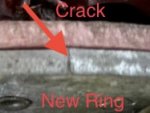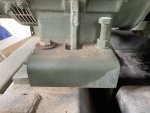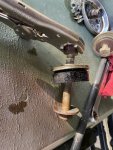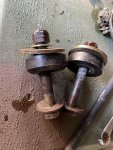I ordered a diode ring from Marathon Electric. I felt that if I was going to go through all of this work, I may as well give myself the best chance of diode ring survival. With that said, we don't know why DOD sourced it elsewhere. It may well be that the OEM part was the lemon. But... it feels more solid in my hand than the alternate source assembly. I now have three assemblies: 1) self-destructed, 2) one attached to the replacement rotor, and 3) OEM replacement. OEM stands for Original Equipment Manufacturer. I noticed something that may have no bearing on the self-destruct mode, but the non-OEM assemblies are mounted on a composite ring, presumably fiberglass. The edge is rather rough suggesting that it was sawn rather than die cut. Also, the rivets, what we assumed were the failure mode (read above), appear to be better swaged on the OEM assembly (edges rolled over).
View attachment 882403
View attachment 882404
Swaged edge of rivets not as beefy as OEM part. We suspect that the rivet was the failure mode that caused the ring to break apart.
View attachment 882405
Swaged edge of rivets not as beefy as OEM part. We suspect that the rivet was the failure mode that caused the ring to break apart.
View attachment 882406
Nice clean edge suggests die cut
View attachment 882407
The rough edge suggests the ring was sawed instead of die cut. Of course, it could have gotten roughed up when it broke apart, but if we compare it to the replacement rotor's diode ring they look similar. It's not possible to say that the broken diode ring and the replacement rotor's diode ring were made by the same manufacturer.
View attachment 882408
This photo was taken of the replacement rotor. I can't yet remove the diode ring because I have to pull the bearing at the end of the shaft. The bearing is supporting the rotor in a wood cradle at the moment so pulling it now would be bad timing.
View attachment 882410






